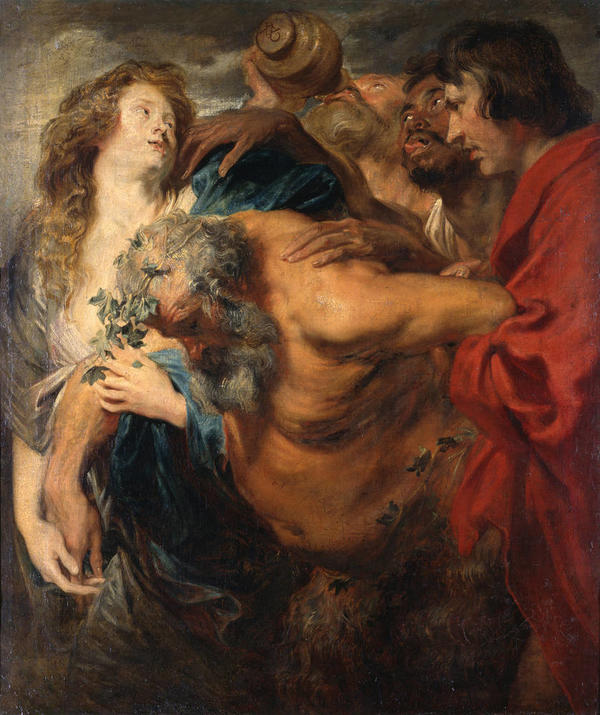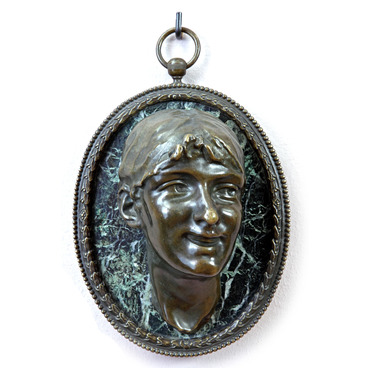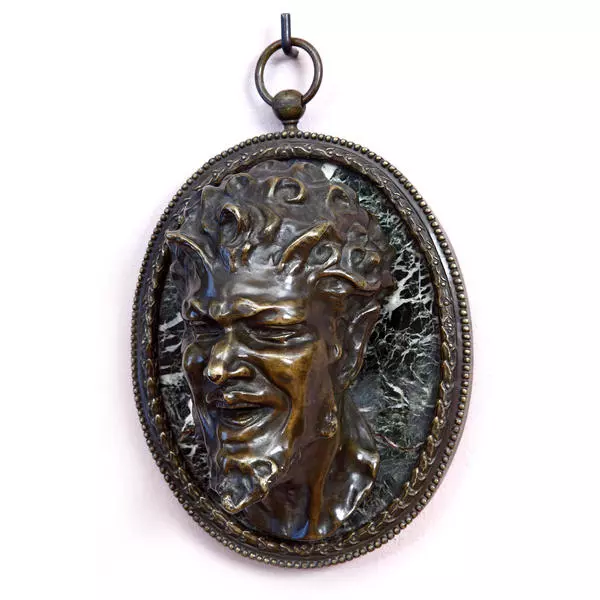Bronze bas-relief Bacchanalia was created in the 19th century. Its author is Claude François Michel, a French artist, known under the name of Clodion. Researchers don’t know exactly who casted bronze for this bas-relief. Most likely, the artist himself made the primary sculpture (of plaster or wax), having worked it down to the smallest detail — and then bronzers made bronze casting. Artists would often turn to foundry masters, it was a common practice. It is important that even if the master did not cast the sculpture himself, he controlled the casting process, made necessary changes and patinated it.
Bacchanalia
Creation period
XIX century
Dimensions
52х42х5.5 cm
Technique
Bronze, casting
Collection
Exhibition
3
Open in app#1
Claude François Michel, Clodion
Bacchanalia
#2
#3
The ancient Romans called the Bacchanalia a noisy holiday in honor of the god Bacchus – the patron of wine and festivity. On the bas-relief, the satires are arming Silenus, the mentor of Bacchus. Different artists painted the hero weighty and drunk, unable to walk on his own. The plot is very frequent in painting, Rubens and van Dyck would touch upon it in their works.
Drunken Silenus by Anthony van Dyck, 1619-1620s.
#4
Clodion would always depict scenes of amusements of fauns, nymphs and satyrs - it was his favorite subject. He took a fancy to antique stories during his trip to Italy. In 1762, the French artist went there to improve his skills and stayed in Rome for almost 10 years. Svetlana Morozova, a researcher studying his art, wrote
“Clodion”s tropes reveal a long and rich tradition of antiquity and, above all, the influence of the Pompeian and Herculanean paintings he saw in Italy’.
#5
In the 18th century Pompeii and Herculaneum excited the minds of many people: archeologists would carry out excavations and find antique paintings and sculptures. Clodion kept prints of Pompeii and Herculaneum paintings in his personal library.
#7
In addition to fascination with antiquity, France was also embraced by the Rococo fashion in the second half of the 18th century. The style was notable for complex whimsical ornaments, quirks, patterns. Clodion kept up with the times - his fauns and nymphs were graceful and playful. The master paid attention to detail, emphasizing the curves of fabrics and naked bodies. The lush floral ornamentation that frames Silenus and satyrs on the bronze bas-relief is also a rococo motive.
Clodion, Monumentum to Commemorate the Invention of the Balloon, 1780s.
#6
The collection of the Yaroslavl Museum of Fine Arts has two more bronze high reliefs of Clodion: a head of a satyr and a head of a nymph. Bas-reliefs and high reliefs would be bought by noblemen for their mansions: they would hang them on the walls, put them in panels and niches. Among Clodion’s wealthy customers were Larochefoucault and Catherine II.
#8
Yaroslavl Museum of Fine Arts
read morehide
00:00
00:00
1x
Bacchanalia
Creation period
XIX century
Dimensions
52х42х5.5 cm
Technique
Bronze, casting
Collection
Exhibition
3
Open in app
Share







